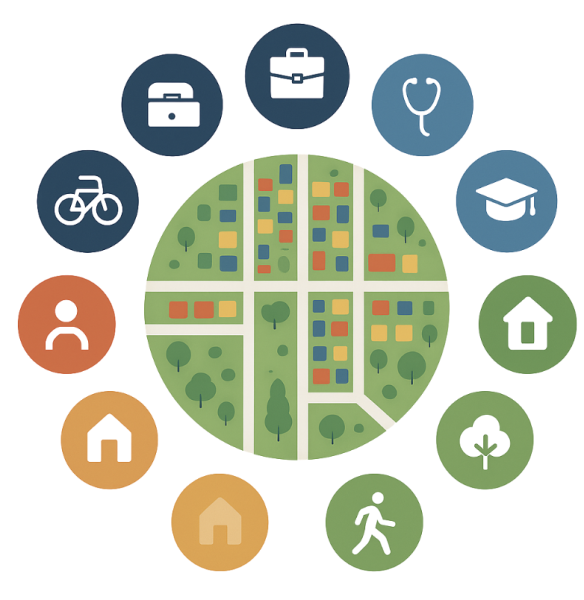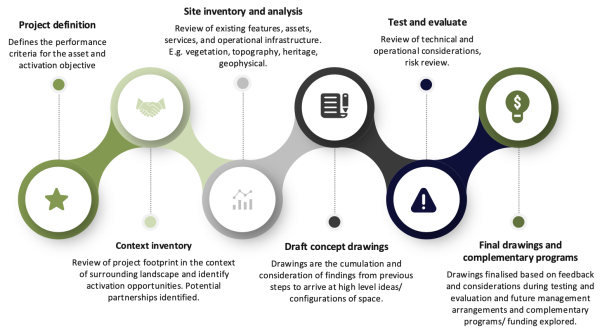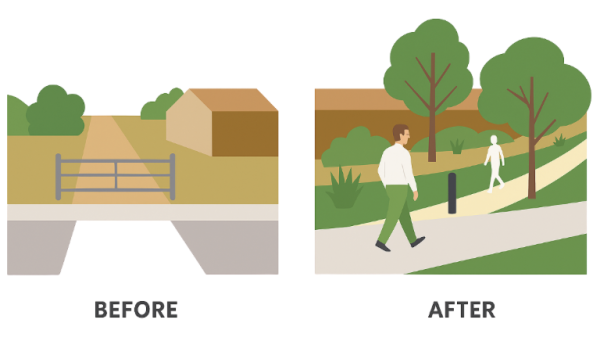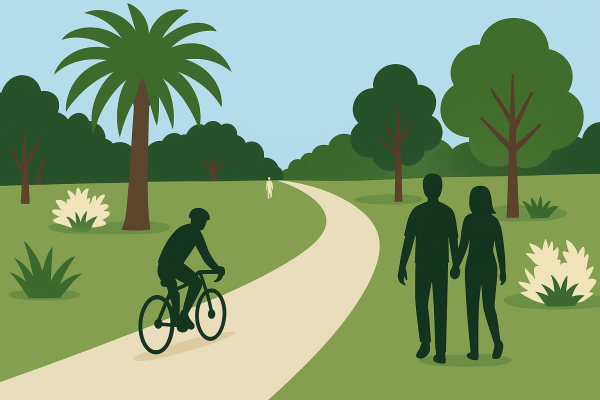At Sequana, we believe in reimagining how engineering can support thriving communities, ecological well-being, and cultural meaning. One way we’re doing this is through the Activation of Space. A different approach to land, infrastructure and engineering design that seeks to bring more value to the places we already have.

WHAT IS THE ACTIVATION OF SPACE?
Put simply, activation of space is about rethinking how existing and future infrastructure, land and assets are used, and how they can be reimagined to deliver broader social, cultural, environmental and recreational benefits.
It’s a response to increasing population growth pressures, the need for more recreational and green spaces, and how to improve the places that we already use. This might mean transforming a bare pipeline corridor into a green commuter pathway or turning a reservoir site into a culturally recreational destination.
It’s about creating places that support people and nature, while still performing their essential service functions or providing community benefits long after their decommissioning.
A STRUCTURED, PLACE-BASED APPROACH
Activation of space is not just a set of design tasks; it’s a structured method. It brings together engineering, risk management, cultural heritage, environmental science, landscape architecture and community engagement. At Sequana, we investigate placemaking with a structured process:

Throughout the entire process, there is continuous evaluation of opportunities, constraints and risks associated with implementing space-making outcomes at a project level. We take the time to carefully explore and consider the social, environmental, cultural and recreational value around places to inform concept design and develop management plans to support activation. Supporting the process as “place-making drawings” that provide a valuable tool for communicating site-based action plans or strategies to investors or the community, and provide an easy-to-engage overview of the activation solution.
By using this structured approach, we unlock more value from existing assets while delivering outcomes that align with policy, community and Traditional Owner aspirations, and long-term sustainability goals.
WHY IT MATTERS FOR CLIENTS AND COMMUNITIES
Doing engineering differently through the activation of space provides better outcomes for asset owners and communities. It helps asset owners demonstrate leadership, support broader liveability and sustainability targets, and deliver outcomes that ensure spaces have multiple functions while still allowing for traditional asset management to be undertaken.
Activation of space is also a critical consideration in project development and design, and the outcomes of an activation assessment can provide a valuable tool to articulate potential benefits and opportunities associated with the project to support:
- Business Case development;
- Discussions with potential project partners and funders;
- Stakeholder engagement; and
- Design and construction phase.

FROM ASSETS TO PLACES: REAL PROJECTS, REAL IMPACT
The Strategic Environment & Planning team at Sequana, along with our partners, has already delivered a series of activation projects across Australia, including:
- Recreational Master Plans
We have co-designed visions for the future of water storage with Water Authorities and the local community, focusing on better access, ecological rehabilitation and long-term recreational value. - Reservoir Activation Studies
We have assessed the feasibility of recreational use at water supply reservoirs, explored how a key water asset could be passively activated while respecting operational, safety and cultural requirements. - Pipeline Construction and Decommissioning
We have provided input to concept designs developed for water supply pipelines, challenging the design to reimagine the alignment as a continuous social and recreational corridor, offering value beyond traditional engineering boundaries. We have also supported pipeline decommissioning design, identifying opportunities for activation for future recreational, ecological and cultural use.
- Reimagining Mine Closures
We have applied place-based design thinking and cultural landscape principles to develop closure concepts for mining sites across Australia. - First Nations-Led Placemaking
A key innovation is our approach to integrating First Nations stories into engineering design through collaborative storytelling, place drawings and culturally informed design criteria.
WHAT’S NEXT?
As we continue to work with our client partners, we see a significant opportunity to scale this work. Reach out to sarah.hale@sequana.co or melanie.tranter@sequana.co to talk about how Sequana can support you in embedding Activation of Space thinking into every stage of engineering design.
The challenge now is to go further, and to bring more of our clients, communities and colleagues into this way of working.
THANK YOU TO OUR CONTRIBUTORS:
- Sarah Hale, Environment and Planning Lead, Sequana
- Melanie Tranter, Associate Director – Water and Environment Advisory, Sequana
- Hayden Burge, Director, Landform Architects


